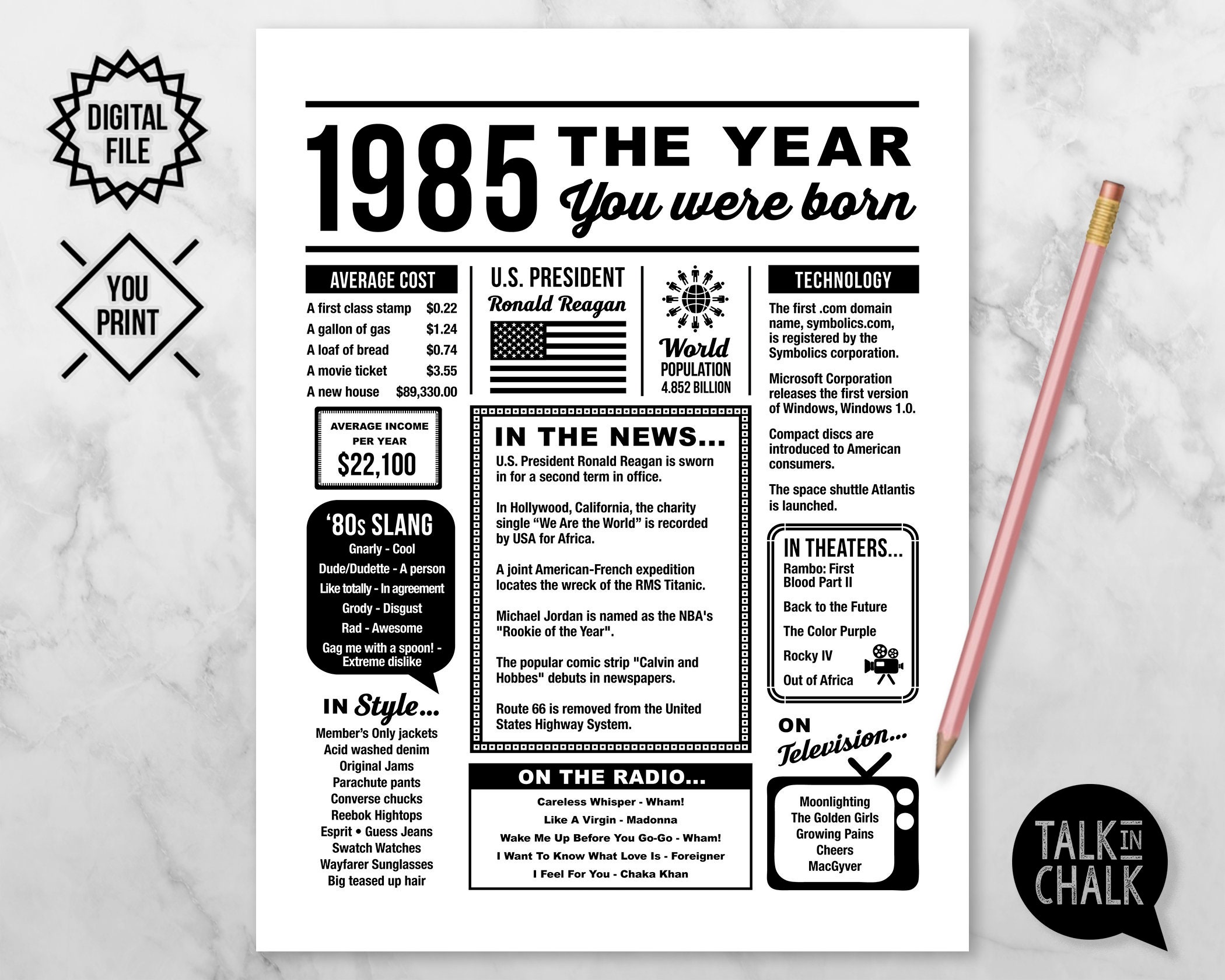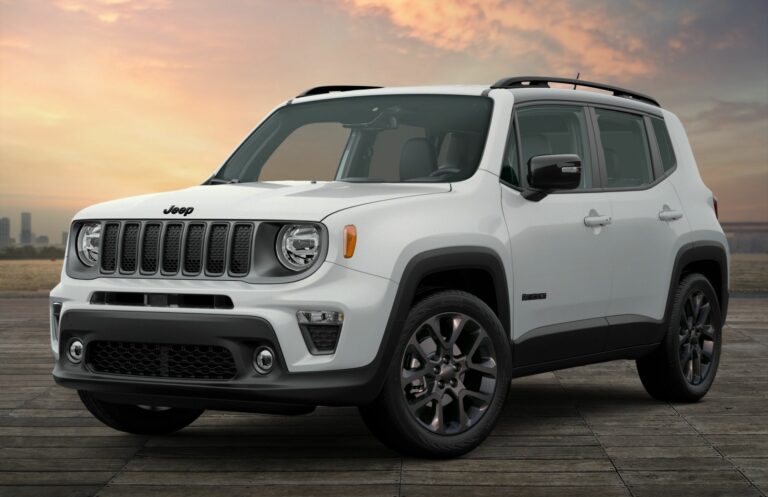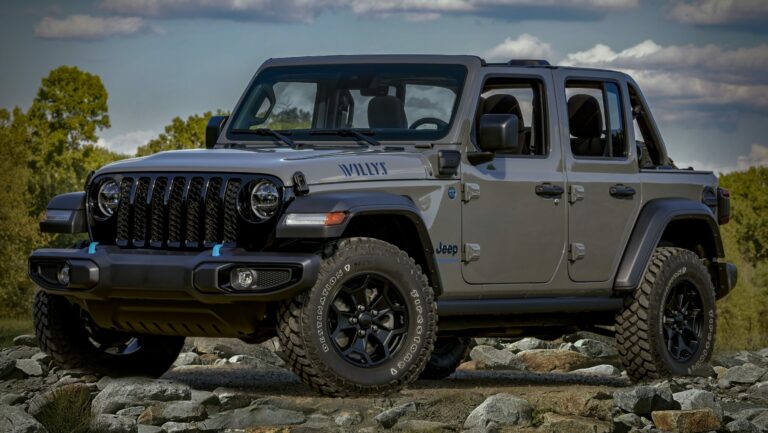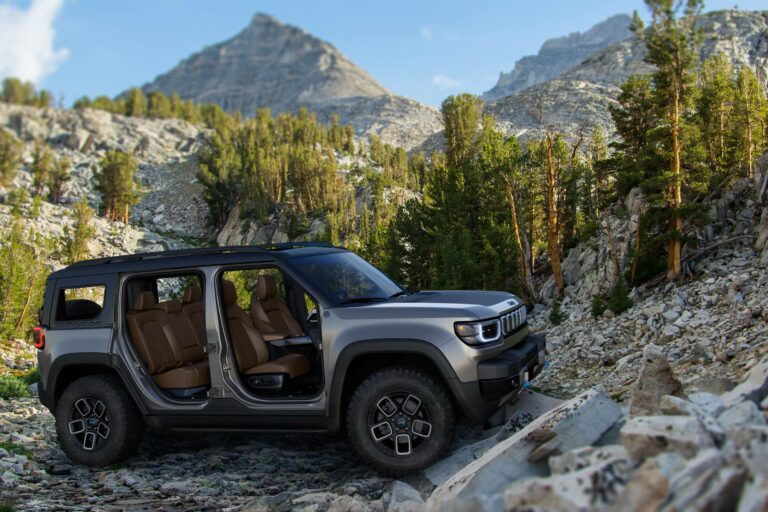1985 Jeep CJ For Sale: Your Guide to Owning an American Icon
1985 Jeep CJ For Sale: Your Guide to Owning an American Icon jeeps.truckstrend.com
The year 1985 holds a special place in the hearts of Jeep enthusiasts. It marks the final production year of the legendary CJ, or Civilian Jeep, before it transitioned into the Wrangler YJ. For decades, the CJ series had defined rugged capability, open-air freedom, and an unmistakable American spirit. Consequently, a 1985 Jeep CJ for sale isn’t just a used vehicle; it’s a piece of automotive history, a testament to enduring design, and a highly sought-after collectible. Whether you’re a seasoned off-roader, a classic car aficionado, or simply someone yearning for a slice of automotive Americana, finding and purchasing a 1985 CJ requires a blend of passion, patience, and practical knowledge. This comprehensive guide will equip you with everything you need to navigate the exciting world of 1985 Jeep CJ ownership.
The End of an Era: Why the 1985 CJ is Special
1985 Jeep CJ For Sale: Your Guide to Owning an American Icon
The Jeep CJ lineage traces its roots back to the military Willys MB of World War II, evolving through various iterations while retaining its core DNA of simplicity, robustness, and unparalleled off-road prowess. By 1985, the CJ-7 and the longer-wheelbase CJ-8 Scrambler were the flagships, embodying the culmination of decades of refinement.
What makes the 1985 model year particularly significant? It’s the final chapter. As Chrysler prepared to acquire AMC (Jeep’s parent company at the time), plans were already in motion to replace the CJ with the more "modern" Wrangler. This makes the ’85 CJ the last true embodiment of the classic, no-frills, go-anywhere Jeep. Its leaf-sprung suspension, solid axles, and iconic removable doors and windshield evoke a sense of pure, unadulterated adventure that later models, while capable, simply couldn’t replicate. Owners often laud the ’85 CJ for its mechanical simplicity, making it a favorite for DIY repairs and customization, and its enduring charm ensures it turns heads wherever it goes.
Understanding the 1985 CJ Models
When you encounter a 1985 Jeep CJ for sale, you’re primarily looking at two distinct body styles, each with its own characteristics and appeal:
- Jeep CJ-7: This is the most common and recognizable 1985 CJ. It features a 93.4-inch wheelbase, offering a slightly more comfortable ride and better stability than its shorter predecessors while still being highly maneuverable off-road. The CJ-7 came with various engine options, including the standard 2.5L AMC I4 (four-cylinder) and the more desirable 4.2L AMC I6 (258 cubic inch inline-six), renowned for its torque and reliability. Transmission options included a four-speed manual (T-4, SR4) or a five-speed manual (T-5), along with the durable three-speed automatic (TF999). Different trim levels like the Laredo, Renegade, and Limited offered varying degrees of creature comforts and aesthetic upgrades.
- Jeep CJ-8 Scrambler: The CJ-8 Scrambler is the unicorn of the 1985 lineup. With a significantly longer 103.5-inch wheelbase, it essentially combined the CJ-7’s front end with an extended rear bed, creating a compact pickup truck. Its utility and rarity make the Scrambler highly sought after by collectors, often commanding a significant premium over a comparable CJ-7. Engine and transmission options mirrored the CJ-7. If you find a 1985 CJ-8 Scrambler for sale, be prepared for a higher price tag, but also for a truly unique and valuable piece of Jeep history.

Both models typically featured Dana 30 front and AMC 20 rear axles, with optional Trac-Lok limited-slip differentials. Understanding these specifications is crucial when evaluating a potential purchase, as they directly impact performance, reliability, and potential upgrade paths.
Where to Find a 1985 Jeep CJ For Sale
The hunt for a classic CJ can be as much an adventure as driving one. Here are the most common avenues to explore:
- Online Marketplaces: Websites like eBay Motors, Craigslist, and Facebook Marketplace are popular starting points. They offer a wide range of CJs in various conditions and price points. Be wary of scams and always insist on seeing the vehicle in person.
- Specialized Classic Car & Off-Road Forums/Websites: Websites like Bring a Trailer, Hemmings Motor News, and dedicated Jeep forums (e.g., JeepForum.com, Pirate4x4.com) often feature well-documented listings from passionate owners. These platforms can be excellent for finding higher-quality, often better-maintained, or already restored examples.
- Classic Car Dealerships: Some dealerships specialize in vintage or off-road vehicles. While their prices might be higher, they often offer thoroughly inspected and sometimes warrantied vehicles.
- Auctions: Live and online auto auctions (e.g., Mecum Auctions, Barrett-Jackson) can be a source for high-end, professionally restored CJs, but bidding requires quick decision-making and a clear budget.
- Word-of-Mouth & Local Ads: Don’t underestimate the power of local connections. Check community bulletin boards, local classifieds, and ask around at car shows or off-road events. Sometimes, the best deals are found through someone who knows someone.


What to Look For: Essential Inspection Checklist
Buying a vintage vehicle like a 1985 Jeep CJ requires a meticulous inspection. Rust is the primary enemy of CJs, and mechanical issues are common. Bring a checklist and, ideally, a knowledgeable friend or mechanic.
- Frame Rust: This is paramount. Inspect the frame rails thoroughly, especially around the steering box, spring hangers, and body mounts. Look for perforations, heavy scaling, or evidence of amateur patch jobs. A heavily rusted frame can be a deal-breaker.
- Body Rust: Common areas include floorboards (especially under the pedals and seats), rocker panels, fender wells, tailgate, and the windshield frame. Surface rust is manageable, but extensive rot will require significant bodywork.
- Engine: Check for leaks (oil, coolant), unusual noises (knocks, ticks), and smoke from the exhaust. A compression test can reveal internal wear. Ensure the engine starts easily and idles smoothly.
- Transmission & Transfer Case: Test all gears, including reverse, for smooth engagement. Check for grinding or popping out of gear. Engage 4WD (high and low range) to ensure the transfer case works correctly. Look for fluid leaks.
- Axles & Driveshafts: Inspect for leaks at the differential covers and axle seals. Check universal joints (U-joints) for play.
- Steering & Suspension: Look for excessive play in the steering wheel. Inspect tie rods, drag link, ball joints, and leaf springs for damage or wear. Check shock absorbers for leaks.
- Brakes: Test pedal feel and stopping power. Check for worn pads/shoes, rusty lines, or leaking wheel cylinders/calipers.
- Electrical System: Test all lights, gauges, wipers, and the heater/blower. CJs are notorious for hacked wiring, so look for clean, unmolested harnesses.
- Interior: Assess the condition of seats, dashboard, and gauges. While easily replaced, a well-preserved interior indicates better overall care.
- Modifications: Many CJs are modified. Evaluate the quality of aftermarket parts (lift kits, bumpers, engine swaps). Poorly installed modifications can lead to significant problems.
- Documentation: Always verify the VIN on the title matches the vehicle. Ask for maintenance records, if available.
Pricing Your Dream CJ: Factors Affecting Value
The price of a 1985 Jeep CJ for sale can vary wildly, from a few thousand dollars for a project to tens of thousands for a meticulously restored example. Several factors influence its market value:
- Condition: This is the single biggest determinant. A rust-free, mechanically sound, and well-maintained CJ will command a premium. A "project" vehicle with extensive rust or mechanical issues will be significantly cheaper but require substantial investment.
- Model: CJ-8 Scramblers are consistently more valuable due to their rarity and unique utility.
- Originality vs. Modifications: For collectors, an original, unmolested CJ often fetches a higher price. For enthusiasts looking to off-road, well-executed and tasteful modifications (e.g., lift, bigger tires, engine upgrades) can add value, but poorly done mods can detract.
- Engine: The 4.2L (258ci) inline-six is generally more desirable than the 2.5L four-cylinder.
- Mileage: While lower mileage is generally preferred, for a nearly 40-year-old vehicle, overall condition and maintenance history often outweigh high mileage.
- Location: Market demand and availability can vary by region.
- Included Accessories: A hardtop, full doors, or desirable aftermarket components can increase value.
The Buying Process: Tips for a Smooth Transaction
Once you’ve found a promising 1985 CJ, here’s how to approach the purchase:
- Set a Realistic Budget: Factor in not just the purchase price but also potential immediate repairs, transportation, insurance, and registration.
- Be Patient: Finding the right CJ can take time. Don’t rush into a purchase.
- Pre-Purchase Inspection (PPI): If you’re not a mechanic, pay a trusted, independent mechanic specializing in older Jeeps or 4x4s to perform a thorough inspection. This small investment can save you thousands.
- Verify Documentation: Ensure the seller has a clear title in their name, and that the VIN on the title matches the vehicle’s VIN plate.
- Negotiate Respectfully: Be prepared to negotiate, especially if your inspection reveals issues. Have comparable sales data to support your offer.
- Arrange Transport: If buying out of state, plan for shipping the vehicle.
- Understand Post-Purchase Costs: Budget for immediate maintenance like fluid changes, tune-ups, and addressing any safety concerns identified during the inspection.
Living with a Classic CJ: Challenges and Rewards
Owning a 1985 Jeep CJ is a unique experience, offering both joys and considerations:
-
Challenges:
- Maintenance: While simple, CJs require regular attention. Parts are generally available, but some specific components might be harder to source.
- Fuel Economy: Don’t expect stellar MPG. These vehicles were designed for power and ruggedness, not efficiency.
- Ride Quality: The leaf-sprung suspension provides a firm ride, especially on rough roads.
- Safety Features: CJs lack modern safety features like airbags, ABS, and advanced crumple zones. Drive defensively.
- Noise & Comfort: They can be noisy, especially with soft tops, and creature comforts are minimal.
-
Rewards:
- Unmatched Driving Experience: The open-air freedom, direct steering, and raw feel are addictive.
- Community: The Jeep CJ community is vibrant and supportive, offering a wealth of knowledge and camaraderie.
- Nostalgia & Icon Status: Owning a CJ connects you to a rich history and makes you part of an exclusive club.
- Customization: The aftermarket for CJs is enormous, allowing for endless personalization.
- Potential Investment: Well-maintained or restored CJs, especially Scramblers, have shown appreciation in value over time.
1985 Jeep CJ For Sale: Estimated Price Guide
Please note: These are general estimates and can vary significantly based on the factors discussed above, as well as specific market demand.
| Model | Condition Category | Description | Estimated Price Range (USD) |
|---|---|---|---|
| 1985 Jeep CJ-7 | Project Vehicle | Significant rust, major mechanical issues, non-running or barely running. Requires full restoration. | $4,000 – $8,000 |
| Driver Quality | Runs and drives reliably, some rust, cosmetic flaws, may need minor mechanical work. Suitable for immediate use, gradual improvements. | $8,000 – $18,000 | |
| Restored/Clean | Minimal to no rust, excellent paint, clean interior, well-maintained or recently rebuilt mechanicals. Ready to show or enjoy. | $18,000 – $35,000+ | |
| 1985 Jeep CJ-8 Scrambler | Project Vehicle | Similar to CJ-7 projects, but due to rarity, even rough ones hold more value. | $10,000 – $18,000 |
| Driver Quality | Runs well, some imperfections, but structurally sound. Higher demand due to rarity. | $18,000 – $35,000 | |
| Restored/Clean | Top-tier condition, often with upgrades or perfect originality. Highly sought after by collectors. | $35,000 – $70,000+ |
Frequently Asked Questions (FAQ) about 1985 Jeep CJs
Q: Are 1985 CJs reliable?
A: With proper maintenance, yes. Their mechanical simplicity makes them robust. However, they are nearly 40 years old, so expect regular upkeep and potential for age-related component failures.
Q: What’s the main difference between a CJ and a Wrangler?
A: The CJ (1945-1986) features a flat-fender design, leaf springs at all four corners, and a more utilitarian interior. The Wrangler (YJ, TJ, JK, JL) introduced wider leaf springs, square headlights (YJ), coil springs (TJ onwards), and more modern creature comforts and safety features. The CJ is often considered the more "pure" and raw off-road experience.
Q: Can I daily drive a 1985 CJ?
A: It’s possible, but not ideal for everyone. They lack modern amenities, fuel economy is poor, and the ride can be harsh. Many owners use them as weekend cruisers or dedicated off-road vehicles.
Q: Are parts hard to find for a 1985 CJ?
A: No, generally not. Due to their popularity and long production run, the aftermarket for CJs is extensive. Most mechanical and body parts are readily available from specialized vendors and general auto parts stores.
Q: Is a 1985 CJ a good investment?
A: For well-maintained, original, or professionally restored examples, particularly Scramblers, values have been steadily increasing. It’s not a guaranteed return, but a good CJ will likely hold its value and could appreciate over time, especially as fewer clean examples remain.
Conclusion
The pursuit of a 1985 Jeep CJ for sale is more than just a search for a vehicle; it’s an embrace of a legacy. These iconic machines represent a bygone era of straightforward engineering, unbridled adventure, and American ingenuity. While acquiring and owning one demands careful research, diligent inspection, and a commitment to classic vehicle care, the rewards are immeasurable. From the distinctive rumble of its engine to the wind in your hair with the top off, a 1985 CJ offers an authentic, engaging driving experience that modern vehicles simply can’t replicate. It’s not just a ride; it’s a statement, a hobby, and a timeless piece of automotive art that will continue to inspire generations of adventurers.




